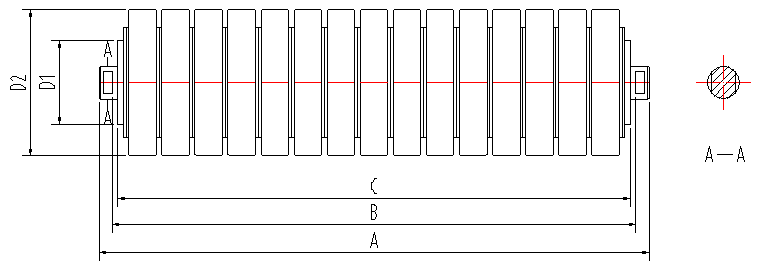 Afrikaans
Afrikaans  Albanian
Albanian  Amharic
Amharic  Arabic
Arabic  Armenian
Armenian  Azerbaijani
Azerbaijani  Basque
Basque  Belarusian
Belarusian  Bengali
Bengali  Bosnian
Bosnian  Bulgarian
Bulgarian  Catalan
Catalan  Cebuano
Cebuano  Corsican
Corsican  Croatian
Croatian  Czech
Czech  Danish
Danish  Dutch
Dutch  English
English  Esperanto
Esperanto  Estonian
Estonian  Finnish
Finnish  French
French  Frisian
Frisian  Galician
Galician  Georgian
Georgian  German
German  Greek
Greek  Gujarati
Gujarati  Haitian Creole
Haitian Creole  hausa
hausa  hawaiian
hawaiian  Hebrew
Hebrew  Hindi
Hindi  Miao
Miao  Hungarian
Hungarian  Icelandic
Icelandic  igbo
igbo  Indonesian
Indonesian  irish
irish  Italian
Italian  Japanese
Japanese  Javanese
Javanese  Kannada
Kannada  kazakh
kazakh  Khmer
Khmer  Rwandese
Rwandese  Korean
Korean  Kurdish
Kurdish  Kyrgyz
Kyrgyz  Lao
Lao  Latin
Latin  Latvian
Latvian  Lithuanian
Lithuanian  Luxembourgish
Luxembourgish  Macedonian
Macedonian  Malgashi
Malgashi  Malay
Malay  Malayalam
Malayalam  Maltese
Maltese  Maori
Maori  Marathi
Marathi  Mongolian
Mongolian  Myanmar
Myanmar  Nepali
Nepali  Norwegian
Norwegian  Norwegian
Norwegian  Occitan
Occitan  Pashto
Pashto  Persian
Persian  Polish
Polish  Portuguese
Portuguese  Punjabi
Punjabi  Romanian
Romanian  Russian
Russian  Samoan
Samoan  Scottish Gaelic
Scottish Gaelic  Serbian
Serbian  Sesotho
Sesotho  Shona
Shona  Sindhi
Sindhi  Sinhala
Sinhala  Slovak
Slovak  Slovenian
Slovenian  Somali
Somali  Spanish
Spanish  Sundanese
Sundanese  Swahili
Swahili  Swedish
Swedish  Tagalog
Tagalog  Tajik
Tajik  Tamil
Tamil  Tatar
Tatar  Telugu
Telugu  Thai
Thai  Turkish
Turkish  Turkmen
Turkmen  Ukrainian
Ukrainian  Urdu
Urdu  Uighur
Uighur  Uzbek
Uzbek  Vietnamese
Vietnamese  Welsh
Welsh  Bantu
Bantu  Yiddish
Yiddish  Yoruba
Yoruba  Zulu
Zulu Understanding V-Belt Drive Systems and Their Pulley Mechanics for Efficient Power Transmission
Understanding V-Belt Drive Pulleys An Essential Component in Mechanical Systems
In the realm of mechanical systems, efficient power transmission is paramount. One of the most critical components in achieving this efficiency is the V-belt drive pulley. This article will explore the function, design, and applications of V-belt drive pulleys, highlighting their significance in various industries.
What is a V-Belt Drive Pulley?
A V-belt drive pulley is a mechanical device that works in tandem with a V-belt to transmit power between different parts of a machine or between multiple machines. The V in V-belt refers to the trapezoidal cross-section of the belt, which fits snugly onto a corresponding groove in the pulley. This design maximizes the frictional grip between the belt and the pulley, enabling efficient transfer of torque and minimizing slippage.
The V-belt drive system typically consists of at least two pulleys a driver pulley, which is powered by a motor or engine, and a driven pulley, which transfers this power to another component. Depending on the specific application, a single V-belt can connect multiple pulleys to achieve various speed ratios and torque distributions.
Advantages of V-Belt Drive Systems
V-belt drive systems offer several advantages over other power transmission methods, such as chain drives or gear systems. First and foremost is their simplicity and ease of installation. V-belts can be easily fitted onto pulleys without the need for complex adjustments or alignments, making them user-friendly for maintenance and repairs.
Moreover, V-belt systems can accommodate small distances between pulleys, making them ideal for compact machinery. Their ability to absorb shock loads helps protect other components from damage during operation, further enhancing their reliability. Additionally, V-belt systems are generally quieter compared to chains and offer smoother operation.
Design Considerations
v belt drive pulley

When designing a V-belt drive system, several factors must be considered to ensure optimal performance. These include the size and material of the belts and pulleys, as well as the spacing and arrangement of the pulleys. The diameter of the pulleys is critical, as it directly affects the speed ratio between the driver and driven shafts. Larger pulleys typically reduce speed while increasing torque, whereas smaller pulleys increase speed at the expense of torque.
The selection of materials is equally crucial. V-belts are usually made from rubber or synthetic materials, sometimes reinforced with fibers for added strength. Pulleys can be manufactured from various materials, including cast iron, aluminum, or even plastics, each offering different benefits in terms of weight, cost, and durability.
Proper tensioning of the V-belt is essential for efficient operation. A belt that is too loose can slip, resulting in power loss, while an overly tight belt can cause excessive wear and tear, reducing the lifespan of both the belt and pulleys. Therefore, implementing tensioning devices or idler pulleys is common to maintain optimal tension.
Applications of V-Belt Drive Pulleys
V-belt drive pulleys find their applications across a wide range of industries. In manufacturing, they are used to power conveyor systems, where consistent speeds are essential for operation efficiency. In the automotive industry, V-belt systems drive various components, including alternators, water pumps, and air conditioning compressors.
Additionally, V-belt drive systems are prevalent in agriculture, powering equipment such as harvesters and feed grinders. HVAC systems often utilize V-belts to drive fans and blowers, emphasizing their versatility and adaptability across different sectors.
Conclusion
In summary, V-belt drive pulleys are indispensable components in the machinery and mechanical systems that drive our industries forward. Their efficient power transmission, ease of installation, and adaptability make them a preferred choice in various applications. Understanding their design and function is essential for engineers and technicians alike, as these systems continue to play a vital role in enhancing productivity and reliability in mechanical engineering. As industries evolve and seek more efficient solutions, V-belt drive pulleys will undoubtedly remain a cornerstone of power transmission technology.
-
Revolutionizing Conveyor Reliability with Advanced Rubber Lagging PulleysNewsJul.22,2025
-
Powering Precision and Durability with Expert Manufacturers of Conveyor ComponentsNewsJul.22,2025
-
Optimizing Conveyor Systems with Advanced Conveyor AccessoriesNewsJul.22,2025
-
Maximize Conveyor Efficiency with Quality Conveyor Idler PulleysNewsJul.22,2025
-
Future-Proof Your Conveyor System with High-Performance Polyurethane RollerNewsJul.22,2025
-
Driving Efficiency Forward with Quality Idlers and RollersNewsJul.22,2025





























